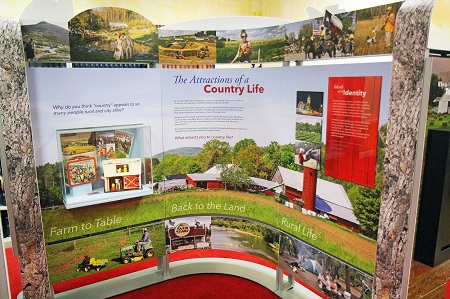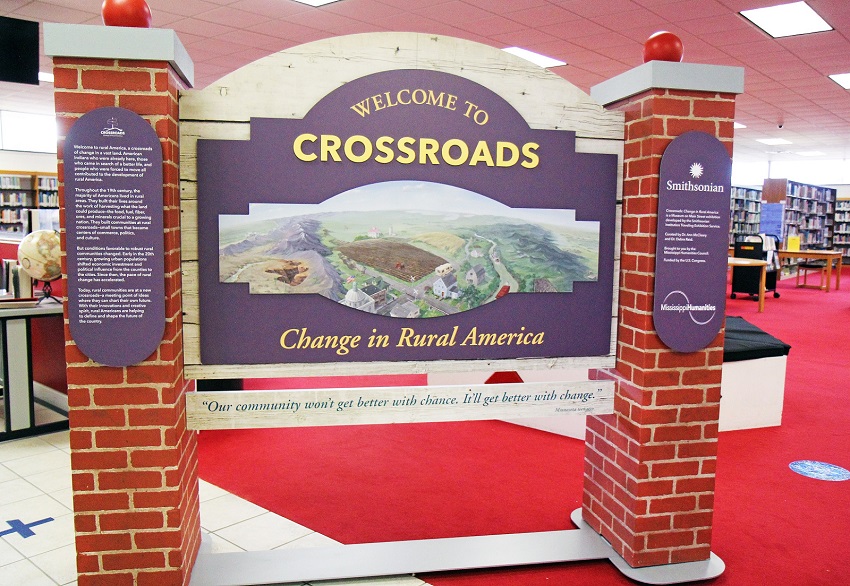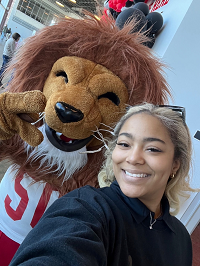26jan
EMCC SCOOBA LIBRARY TO HOST SMITHSONIAN EXHIBIT
News
January 26, 2020
The Smithsonian Institution’s Museum on Main Street traveling exhibition titled “Crossroads:
Change in Rural America” will be on display at the Tubb-May Library on East Mississippi
Community College’s Scooba campus Feb. 8 to March 12.
An opening reception for the exhibition will take place Feb. 8 from 5 p.m. to 7 p.m.
Guest speakers are expected to include EMCC President Dr. Scott Alsobrooks, Mississippi
Humanities Council Executive Director Dr. Stuart Rockoff and U.S. Sen. Roger Wicker,
who is tentatively scheduled to address attendees remotely via Zoom.
The reception is open to the public, although given COVID restrictions no more than
50 people at a time will be allowed inside the Tubb-May Library and the room where
the exhibition will be set up will be limited to 10 people or fewer at a time. Those
who wish to attend the reception are asked to contact EMCC librarian Christina Jurusik
in advance by phone at 662.476.5054 or by email at cjurusik@eastms.edu.
Attendees are asked to wear masks that cover the nose and mouth and follow social
distancing guidelines.
Following the reception, the exhibition will be open Monday through Thursday from
10 a.m. to 7 p.m., on Fridays from 10 a.m. to 2 p.m. and on Sundays from 3 p.m. to
6 p.m. High school teachers who would like to schedule a class tour can email Jurusik
to schedule a time.
Due to the novel coronavirus, times are subject to change.
Other sites in Mississippi will also host the Crossroads tour, which is being conducted
in cooperation with the Mississippi Humanities Council and the Smithsonian Traveling
Exhibition Service.
“Crossroads: Change in Rural America” pays homage to America’s rural past and looks
at ways in which some small towns have successfully adapted to the U.S. shift from
an agrarian society to one that is increasingly urban.
“Despite the massive economic and demographic impacts brought on by these changes,
America’s small towns continue to creatively focus on new opportunities for growth
and development,” the Smithsonian Institution’s Museum on Main Street website states
about the exhibit. “Economic innovation and a focus on the cultural facets that make
small towns unique, comfortable, and desirable have helped many communities create
their own renaissance.”
Exhibition displays center around themes such as rural identity, managing change in
rural communities, a connection to the land, and a sense of community, among other
things.
The exhibition features five free-standing displays with photographs and text panels,
along with touchscreen computer kiosks with video and audio content, according to
the Museum on Main Street website. Postcards provided by Museum on Main Street will
also be available to attendees.
Jurusik has created posters containing information about the history of EMCC and the
surrounding community that will also be on display. Attendees will also be given an
opportunity to provide feedback on what life in a rural community means to them.
“To be able to host a Smithsonian Institution Museum on Main Street exhibition and
share it with our students and members of the community is exciting,” Jurusik said.
“The story of rural America is one many residents in our local communities know well.
This exhibition is not only for them but in some ways it is about them and the contributions
they have made to the communities in which they reside.”




 Visit a Campus
Visit a Campus





